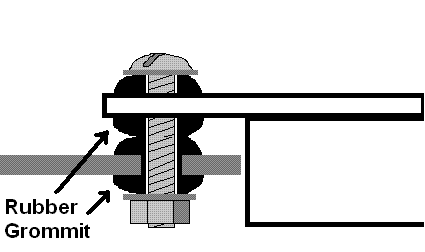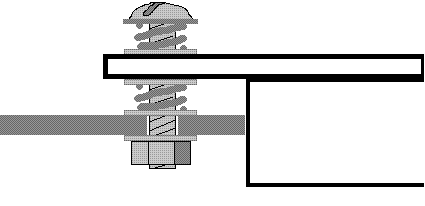Anybody got some good advice on doing this? This is the best plan I've come up with so far.

Those Marshall-ish brown plastic octal sockets might work ok this way as they appear to have pretty heavy duty brackets, however most of the noval sockets I've seen (or bought) have pretty flimsy mounting brackets.
It could also be done with springs.

Probably more springy (pardon the pun) than using rubber grommit but it starts to become quite a contraption. Plus the problem with flimsy mounting brackets still exists.
...And one last idea I had for shockmounting tubes that use those mounting rings that "clamp" the tube to the chassis.

The o-rings could be like the high-temp silicon rubber rings Weber sells as tube vibration dampeners. https://taweber.powweb.com/store/tubesktord.htm Kind of a cool idea I think, but probably hard to make work practically. It would be difficult to make sure the socket was completely floating and not rubbing on the chassis or mounting ring.
This is were I sneak in my "what do you think is the best socket, and where do you get it? line. Like I alluded to, I've bought a couple different kinds each of octal and noval sockets and have been dissapointed in how flimsy they were.

Those Marshall-ish brown plastic octal sockets might work ok this way as they appear to have pretty heavy duty brackets, however most of the noval sockets I've seen (or bought) have pretty flimsy mounting brackets.
It could also be done with springs.

Probably more springy (pardon the pun) than using rubber grommit but it starts to become quite a contraption. Plus the problem with flimsy mounting brackets still exists.
...And one last idea I had for shockmounting tubes that use those mounting rings that "clamp" the tube to the chassis.

The o-rings could be like the high-temp silicon rubber rings Weber sells as tube vibration dampeners. https://taweber.powweb.com/store/tubesktord.htm Kind of a cool idea I think, but probably hard to make work practically. It would be difficult to make sure the socket was completely floating and not rubbing on the chassis or mounting ring.
This is were I sneak in my "what do you think is the best socket, and where do you get it? line. Like I alluded to, I've bought a couple different kinds each of octal and noval sockets and have been dissapointed in how flimsy they were.

Comment